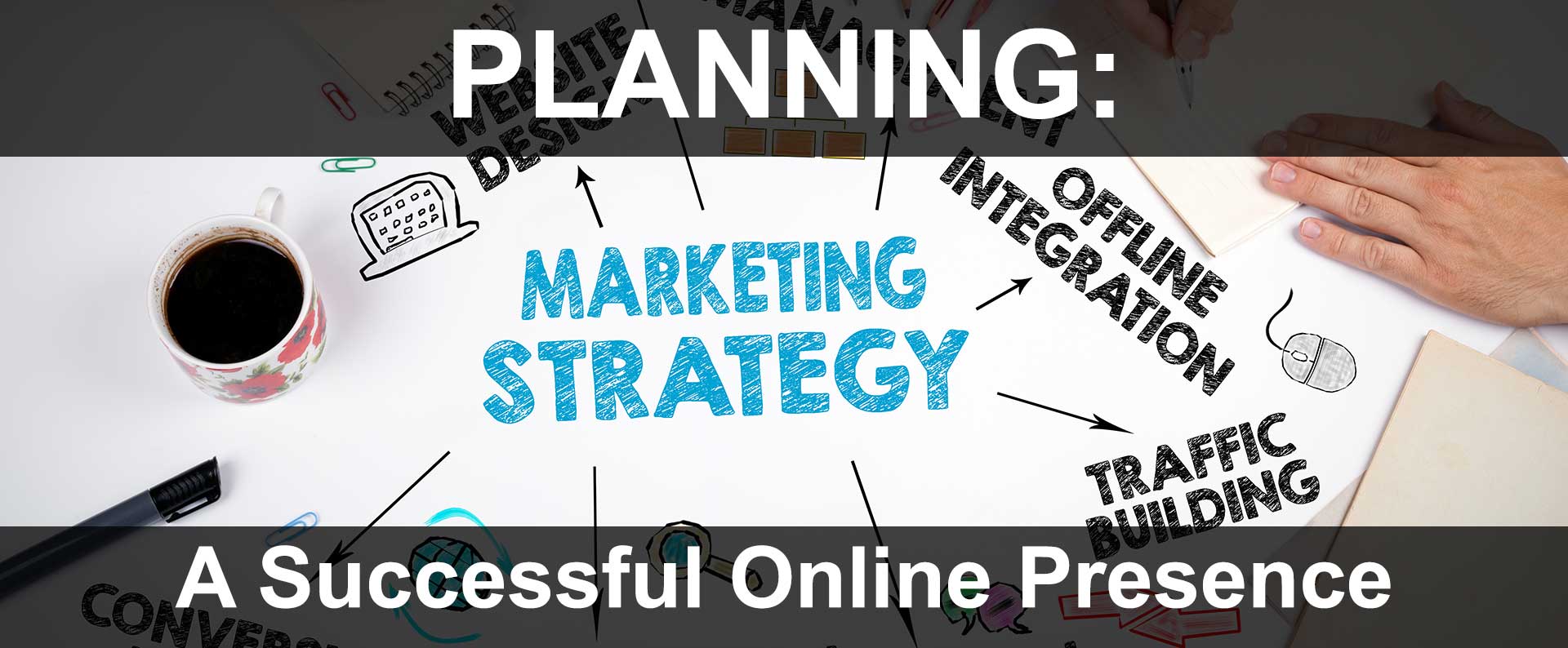Establishing and evolving your online presence is more important than ever to SMB success. Whether you’re launching your first website or revamping an established online platform, a well-planned strategy is essential to reach new audiences, generate leads, and drive growth.
Today, fresh marketing strategies—including AI integration, personalized experiences, and immersive digital technologies—are at the forefront of building strong connections with customers across industries like retail, restaurants, hospitality, construction, healthcare, and professional services.
Below is an updated roadmap to craft an effective online presence and multi-channel campaign, along with actionable steps and industry-specific insights.
Laying the Foundation: Research & Strategy
Creating an effective online strategy begins with a thorough understanding of your market landscape. Here’s how to kick-start your efforts:
- Research Opportunities
Dive deep into the digital ocean to discover emerging trends relevant to your industry.
- Competitor Analysis
Study what your competitors are doing online. Identify their strengths and weaknesses to carve out your unique niche.
- Customer Insights
Engage with your existing customers through surveys or social media polls to gather valuable feedback.
- Data Analysis
Utilize analytics tools to interpret initial data, adapting your strategy based on customers interactions.
- Iterate & Refine
As you gather insights, refine your approach. Stay agile and open to change.
The initial research phase is critical. The majority of your time should be dedicated to understanding who your customers are and what your competition's doing. This knowledge will guide your strategy and content creation.
Key Questions to Guide Your Strategy
Now that you've laid the groundwork, consider these pivotal questions to shape your campaign:
- What’s Your Budget?
Determine your financial capabilities for research, design, and ongoing marketing. This will guide whether you choose DIY solutions or partner with professionals.
- Which Channels Will You Use?
Identify the platforms where your customers spend their time (websites, social media, etc.). For instance, TikTok is a vibrant space for retail brands targeting younger audiences.
- E-commerce Requirements?
Consider whether you need online shopping capabilities, including inventory and payment systems.
- Collateral Needs?
Assess what marketing materials you require—logos, videos, or digital brochures.
- Target Market Demographics?
Understand your audience. Is it the same as your physical store? The digital realm opens doors to wider demographics.
Embracing New Trends & Technologies
Modern digital strategies go beyond static webpages and simple social posts. Here are several innovative trends to consider:
- Artificial Intelligence & Personalization:
AI-powered chatbots and recommendation engines can tailor experiences for each visitor, making interactions more engaging and relevant.
- Voice & Visual Search Optimization:
With the rise of smart speakers and advanced image recognition, ensure your content is optimized for voice queries and visual searches.
- Video & Influencer Marketing:
Short and engaging video content on platforms like TikTok and Instagram Reels, along with collaborations with micro-influencers, can boost brand visibility.
- Augmented Reality (AR) Experiences:
Allow customers to virtually try products or explore services. From retail try-on features to immersive hotel tours, AR can elevate the customer experience.
- Data-Driven Decision Making:
Leverage advanced analytics to monitor user behavior and tweak strategies in real time, ensuring that every piece of content or ad resonates with your audience.
- Sustainability Storytelling:
Consumers prioritize brands with eco-conscious practices.
- Community-Driven Social Media:
Platforms like TikTok Shop and LinkedIn Community Pages foster loyalty.
Tailored Strategies for Each Industry
Let’s explore how different sectors can maximize their online presence:
1. Retail: Blending Digital & In-Store Magic
Why It Matters:
72% of shoppers still prefer buying in-store but research online first (Retail Dive, 2025).
Benefits:
A strong online presence can increase foot traffic, enhance customer engagement, and boost sales.
Actionable Steps:
-
E-commerce Integration:
Set up an online shop with a user-friendly interface.
-
Social Media Integration:
Use platforms like Instagram and Pinterest to showcase products and drive traffic to your site.
- Local SEO:
Optimize your website for local searches to attract nearby customers.
Example: A local clothing store can leverage Instagram Shopping to tag products in posts, allowing users to shop directly from their feed.
2. Restaurants: Beyond the QR Code Menu
Why It Matters:
Diners now expect 90-second delivery windows and crave immersive experiences.
Benefits:
An engaging online presence can attract new customers and improve reservations.
Actionable Steps:
-
Google My Business & Bing Places:
Claim and optimize your listing to appear in local search results.
- Dynamic Menus:
Create a visually appealing website that features an interactive menu with seasonal specials.
- Online Reservations:
Implement platforms like OpenTable for easy booking.
Example: A local bistro might use Instagram Stories to showcase daily specials and invite followers to make reservations.
3. Hospitality: Elevating the Guest Journey
Why It Matters:
Travelers prioritize personalized, contactless experiences.
Benefits:
A compelling online presence can significantly increase bookings and improve guest experiences.
Actionable Steps:
-
Virtual Tours:
Offer potential guests virtual tours of your property on your website.
-
Travel Partnerships:
Collaborate with travel influencers to promote your hotel through authentic experiences.
-
User-Generated Content:
Encourage guests to share their experiences online, enhancing your brand's visibility.
Example: A bed-and-breakfast could create a TikTok channel featuring guest testimonials and behind-the-scenes looks at their offerings.
4. Construction: Building Trust Digitally
Why It Matters:
68% of clients vet contractors via social media before hiring (HomeAdvisor, 2025).
Benefits:
A robust online presence can establish credibility and generate leads.
Actionable Steps:
-
Project Portfolio:
Showcase completed projects on your website with high-quality images and client testimonials.
-
LinkedIn Networking:
Use LinkedIn to connect with other professionals and showcase your expertise through articles and posts.
-
SEO Content Marketing:
Write blog posts on construction tips, regulations, or trends to attract organic traffic.
Example: A local contractor might publish a blog post on sustainable building practices, attracting environmentally-conscious clients.
5. Healthcare: Compassion Meets Tech
Why It Matters:
Patients want convenience without sacrificing care quality.
Benefits:
A clear online presence can help potential patients find and trust your services.
Actionable Steps:
-
Patient Portal:
Implement a secure area for patients to access their health information and schedule appointments.
-
Educational Content:
Create and share informative content on health topics relevant to your practice.
-
Online Reviews:
Encourage satisfied patients to leave positive reviews on platforms like Google and Yelp.
Example: A dental practice could create instructional videos on proper oral hygiene, fostering trust and engagement.
6. Professional Services (Legal, Accounting, etc.): Simplifying Complexity
Why It Matters:
Clients seek transparency and proactive guidance.
Benefits:
A polished online presence can enhance credibility and attract new clients.
Actionable Steps:
-
Thought Leadership:
Publish articles or white papers on relevant topics to position yourself as an industry expert.
-
Webinars:
Host informative webinars to educate potential clients on industry trends or legal topics.
-
Email Newsletters:
Send regular newsletters to keep your audience informed about your services and industry updates.
Example: A law firm might host a webinar on recent changes in regulations, attracting potential clients seeking guidance.
3 Universal Tips for All Industries
-
Repurpose Content Everywhere:
Turn a blog post into a video, podcast snippet, and infographic.
-
Leverage AI Responsibly:
Use tools like Jasper.ai for drafts, but add human nuance.
-
Track What Matters:
Focus on quality leads over vanity metrics like follower counts.
Planning & Implementation
After completing your research and defining your strategies, compile your plan. Organize it into phases, starting with simpler initiatives before moving to more complex elements:
1. Phase One – Foundation:
-
Website Essentials:
Your website is your digital storefront. Ensure it's mobile-friendly, visually appealing, and easy to navigate. Crucially, prioritize Core Web Vitals (page speed, responsiveness, and visual stability) for improved search engine ranking.
-
Retail: Showcase high-quality product images, detailed descriptions, and customer reviews. Integrate online ordering and personalized recommendations.
-
Restaurants: Feature online menus, reservations, and ordering systems. Include high-quality photos of your dishes and ambiance.
-
Hospitality: Display stunning visuals of your property, highlight amenities, and integrate booking functionality. Offer virtual tours.
-
Construction: Showcase past projects with before-and-after photos, testimonials, and detailed service descriptions.
-
Healthcare: Provide clear information about your services, specialties, and insurance accepted. Offer online appointment scheduling.
-
Professional Services: Establish credibility by highlighting expertise, qualifications, and client testimonials. Include a blog for thought leadership.
-
Retail: Showcase high-quality product images, detailed descriptions, and customer reviews. Integrate online ordering and personalized recommendations.
- Local SEO:
Optimize your Google My Business profile, Bing Places, social profiles, and other online directories. Claim your business on relevant review platforms. Target "near me" searches to attract local customers.
-
Actionable Step: Conduct a local SEO audit to identify areas for improvement.
-
Actionable Step: Conduct a local SEO audit to identify areas for improvement.
- Content Marketing:
Create valuable content that educates and engages your target audience. This could include blog posts, articles, infographics, videos, or podcasts.
- Actionable Step: Develop a content calendar aligned with your target audience's interests and needs.
2. Phase Two – Engagement:
-
Social Media Engagement:
Choose the platforms where your target audience is most active. Create engaging content, run targeted ads, and interact with your followers.
-
Restaurants: Share mouthwatering food photos and videos, run contests, and promote special events.
-
Retail: Showcase new arrivals, offer exclusive discounts, and run influencer marketing campaigns.
-
Construction: Share project updates, highlight your team's expertise, and offer behind-the-scenes glimpses.
-
Restaurants: Share mouthwatering food photos and videos, run contests, and promote special events.
- Paid Advertising:
Explore platforms like Google Ads, Bing Ads, Meta Ads (Facebook & Instagram), and LinkedIn Ads to reach a wider audience. Target specific demographics and interests for optimal results.
- Actionable Step: Experiment with different ad formats and targeting options to find what works best for your business.
- Actionable Step: Experiment with different ad formats and targeting options to find what works best for your business.
- Email Marketing:
Build an email list and nurture your subscribers with valuable content, exclusive offers, and personalized messages. Segment your list for targeted campaigns.
- Actionable Step: Implement email automation to streamline your communication efforts.
- Actionable Step: Implement email automation to streamline your communication efforts.
- Influencer Marketing:
Partner with relevant influencers to reach a wider audience and build trust. Choose influencers whose values align with your brand.
- Hospitality: Collaborate with travel bloggers and Instagrammers to showcase your property.
3. Phase Three – Expansion:
-
Short-Form Video:
Leverage platforms like TikTok, Instagram Reels, and YouTube Shorts to create engaging short-form video content. This format is highly effective for capturing attention and driving engagement.
-
Retail: Create product demos, styling tips, and behind-the-scenes glimpses.
-
Retail: Create product demos, styling tips, and behind-the-scenes glimpses.
- Interactive Content:
Implement quizzes, polls, and interactive games to engage your audience and gather valuable data.
-
Healthcare: Create interactive quizzes to educate patients about health conditions and treatments.
-
Healthcare: Create interactive quizzes to educate patients about health conditions and treatments.
- Artificial Intelligence (AI):
Explore AI-powered tools for content creation, social media management, and customer service. Chatbots can provide instant support and answer frequently asked questions.
-
Professional Services: Use AI-powered chatbots to handle initial client inquiries and schedule consultations.
-
Professional Services: Use AI-powered chatbots to handle initial client inquiries and schedule consultations.
- Metaverse Marketing:
Explore opportunities in the metaverse to connect with your audience in new and immersive ways. This could include virtual events, product showcases, or interactive experiences.
- Retail: Create virtual stores where customers can browse and purchase products in a 3D environment.
Embrace the Journey
Remember, building a successful online presence is a journey that takes time and persistence. By strategically developing your online presence, you can unlock new opportunities for growth and engagement. Stay proactive, adapt to trends, and keep your audience's needs at the forefront of your efforts.
The digital landscape is ever-evolving, but with the right approach, your business can thrive in this dynamic environment. Embrace the possibilities, and watch your business flourish!













